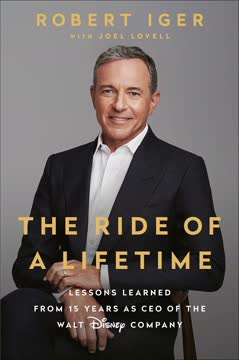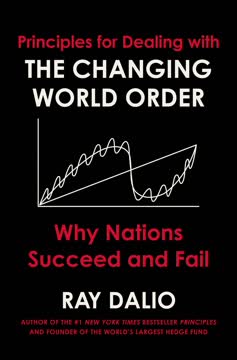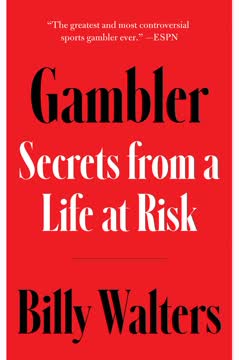Key Takeaways
1. Investment Banking: Middlemen Navigating Complex Financial Landscapes
Investment bankers are primarily middlemen between parties on two sides of a transaction.
Core Functions. Investment banks act as intermediaries, connecting corporations with investors for financing and providing advice on mergers and acquisitions (M&A). Corporate finance involves raising capital through underwriting securities, while sales and trading focuses on buying and selling securities for institutional investors and wealthy individuals.
Agent vs. Principal. Investment banks traditionally operate as agents, facilitating transactions between buyers and sellers. However, many firms have increasingly engaged in proprietary trading and principal investing, blurring the lines and raising conflict-of-interest concerns.
League Tables and Rankings. The pecking order among investment banks is often determined by league tables, which rank firms based on their involvement in various types of transactions. M&A advice and leading IPOs are the most profitable products, driving competition and shaping industry dynamics.
2. The Rise and Fall of Relationship Banking: From Trust to Transactions
At one time, the investment banker viewed his interrelated obligations as to the client, the institution, and the markets.
Golden Age. The era of relationship banking, epitomized by Sidney Weinberg, emphasized loyalty, exclusivity, and independent advice. Glass-Steagall protected investment banks from commercial bank competition, fostering a culture of trust and long-term partnerships.
Erosion of Values. The rise of publicly held financial supermarkets and the focus on M&A as a profit center undermined relationship banking. The emphasis shifted from long-term client relationships to short-term transactional gains.
Consequences. The shift towards a more aggressive, opportunistic business model led to a decline in trust and integrity within the industry. New organizations like hedge funds and LBO firms began to fill the void, raising questions about transparency and risk.
3. Goldman Sachs: An Empire Built on Culture, Tested by Change
At one time, the investment banker viewed his interrelated obligations as to the client, the institution, and the markets.
Unique Culture. Goldman Sachs, historically insular and resistant to lateral hires, cultivated a strong internal culture based on teamwork, communication, and a shared ethos. This culture fostered loyalty and minimized internal divisions.
Challenges to the Culture. The firm faced significant challenges in 1994, including trading losses, partner retirements, and leadership transitions. These events exposed the fragility of Goldman's social and financial compact.
The IPO Debate. The crisis of 1994 sparked a debate over whether to pursue an IPO, highlighting the tension between tradition and the need for capital. The decision to go public ultimately transformed the firm, altering its culture and priorities.
4. The Allure and Peril of M&A: A Culture of Celebrity and High Stakes
Publicity accompanied transactional banking as naturally as secrecy did relationship banking.
M&A's Ascendancy. The rise of M&A as a profit center transformed investment banking, fostering a culture of celebrity and high stakes. M&A bankers, often without deep industry expertise, became key players in corporate strategy.
The Dark Side of M&A. The focus on deal volume and fees led to a decline in standards and a willingness to relax corporate values. The "IBG YBG" ("I'll Be Gone, You'll Be Gone") mentality prioritized short-term gains over long-term consequences.
Conflicts of Interest. The pursuit of M&A deals created conflicts of interest, as investment banks prioritized their own profits over the best interests of their clients. This erosion of trust contributed to the industry's decline in reputation.
5. The Internet Boom: A Catalyst for Cultural and Structural Shifts
Suddenly these investment bankers found themselves cast as principal players in the free wheeling go-go Internet economy complete with their very own public celebrities.
Irrational Exuberance. The Internet boom fueled unprecedented growth in the technology and telecommunications sectors. Investment banks played a key role in legitimizing speculative start-ups and opining on inflated valuations.
New Metrics, New Rules. Traditional valuation methods were abandoned in favor of new metrics like "clicks" and "eyeballs," which had no proven relationship to earnings. This created a climate of irrationality and speculation.
The Rise of Internet DNA. The demand for "Internet DNA" led to a lowering of hiring standards and a shift in power dynamics within investment banks. Traditional bankers were forced to defer to those with expertise in the new economy.
6. The Bust and Its Aftermath: A Reckoning for Investment Banks
Once the bubble burst starting in 2000, these banks were barely recognizable from what they were before.
The Inevitable Correction. The bursting of the Internet bubble exposed the flaws in the boom-era business model. Investment banks faced shrinking business bases, increased regulatory scrutiny, and a loss of trust.
Retrenchment and Layoffs. The downturn led to widespread layoffs and cost-cutting measures. The "celebrity" bankers of the era made many enemies and faced consequences for their actions.
A Less Trusted Industry. The industry that emerged from the bust was both less trusted and less profitable. New organizations like hedge funds and LBO firms began to fill the void, raising questions about the future of finance.
7. The Myth of Meritocracy: Talent, Opportunity, and the Realities of Wall Street
In place of this ideal a culture of contingency emerged, a sense not only that each day might be your last, but that your value was linked exclusively to how much revenue was generated for the firm on that day—regardless of its source.
The Illusion of Meritocracy. Investment banks often promote the idea that success is based solely on merit, but the reality is more complex. Factors like connections, internal politics, and luck play a significant role.
The Drama of the Gifted Banker. The pressure to achieve and maintain social status can lead to a sense of emptiness and a relentless pursuit of external validation. This can create a culture of anxiety and competition.
The Limits of Talent. While talent is important, it is not enough. Success requires a combination of skill, hard work, and the ability to navigate complex social and political landscapes.
8. The Enduring Power of Relationships: Navigating a Changing Landscape
The fundamental shift in investment banking to a more aggressive, opportunistic, and transactional business model from one rooted in long-term client relationships and deeply held business values was not a product of the Internet era in particular.
The Value of Trust. Despite the industry's transformation, the ability to build and maintain strong client relationships remains crucial. CEOs value advisors who can provide honest, objective advice and demonstrate sound judgment.
The Challenge of Conflicts. The increasing complexity of the financial landscape has created new challenges for maintaining client loyalty and confidentiality. Investment banks must navigate these conflicts carefully to preserve their reputation.
The Search for a New Model. The industry is still searching for a sustainable business model that balances profitability with integrity and client service. The future of investment banking will depend on its ability to adapt to a changing world.
9. The Rise of John Thornton: A Maverick's Impact on Goldman Sachs
I’m looking for smart guys who get it.
Unconventional Path. John Thornton's rise within Goldman Sachs was marked by his unconventional background, iconoclastic style, and focus on building relationships with key decision-makers. He challenged the firm's traditional culture and hierarchy.
Building a Power Base. Thornton's success in London and Asia allowed him to amass significant power within the firm. He used his influence to promote his acolytes and shape the firm's strategy.
The Limits of Iconoclasm. Thornton's confrontational style and disregard for Goldman's traditions ultimately led to his downfall. His departure signaled a shift back towards a more traditional leadership model.
10. The Morgan Stanley Story: From White Shoes to Financial Supermarket
It was a merger of patricians and plebeians, and the final irony was that the plebeians out-witted the patricians.
Clash of Cultures. The merger of Morgan Stanley and Dean Witter Discover created a clash of cultures between the firm's traditional investment banking ethos and Dean Witter's retail brokerage focus. This tension played out in the power struggle between John Mack and Phil Purcell.
The Purcell Era. Phil Purcell's leadership marked a shift towards a more retail-oriented strategy and a focus on cost-cutting. This alienated many of Morgan Stanley's traditional investment bankers.
The Grumpy Old Men. The ouster of Purcell and the return of John Mack represented an attempt to restore Morgan Stanley's former glory. However, the firm continued to face challenges in a rapidly changing industry.
Last updated:
Review Summary
The Accidental Investment Banker receives mixed reviews, with ratings ranging from 1 to 5 stars. Some readers find it insightful and educational, offering a unique perspective on investment banking's history and culture. Others criticize it as boring, self-aggrandizing, and lacking depth. Positive reviews praise the book's honesty and historical context, while negative reviews claim it's a vanity project with excessive name-dropping. Overall, readers with a finance background or interest in investment banking tend to appreciate the book more than casual readers.
Similar Books










Download PDF
Download EPUB
.epub digital book format is ideal for reading ebooks on phones, tablets, and e-readers.





